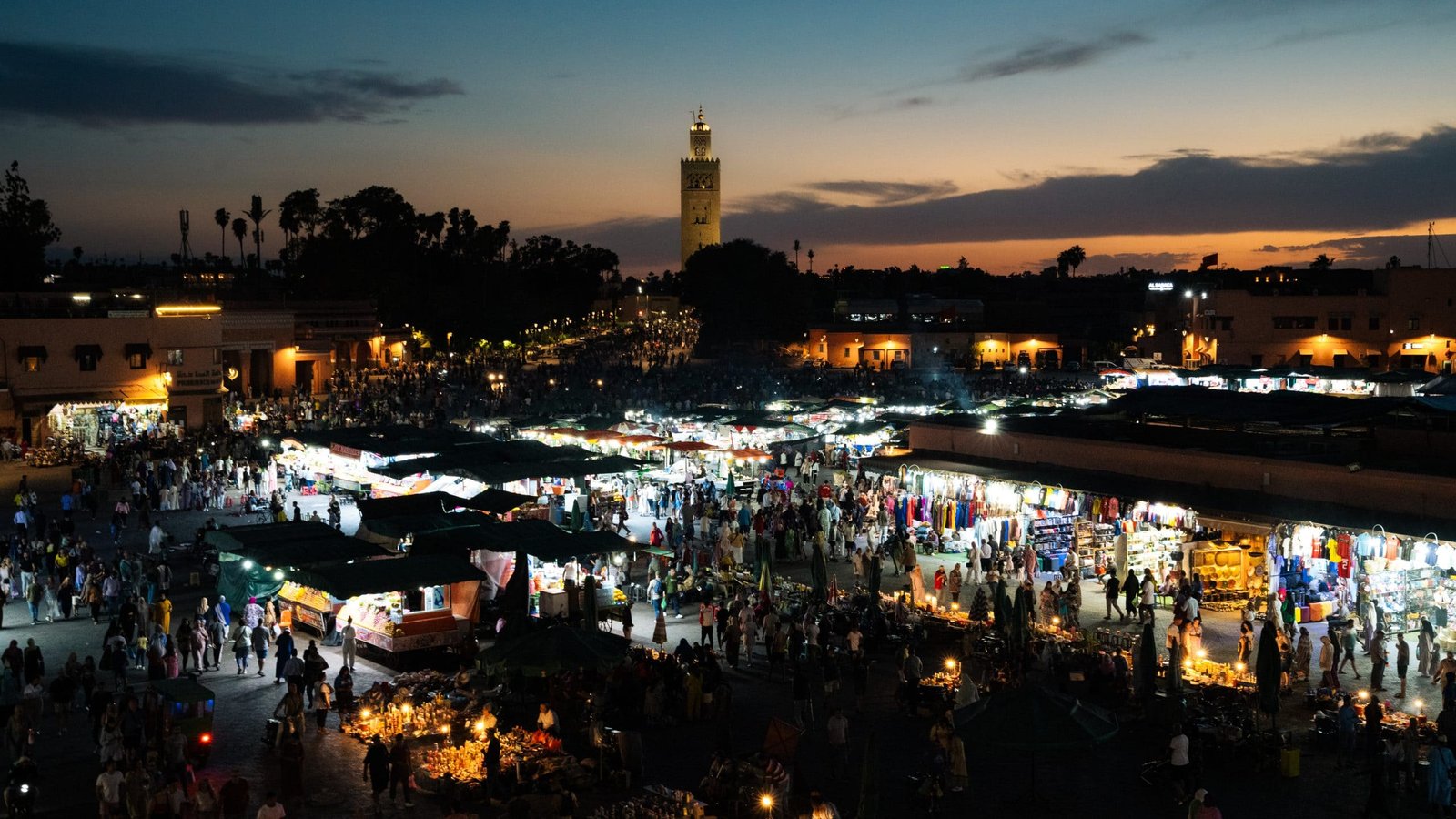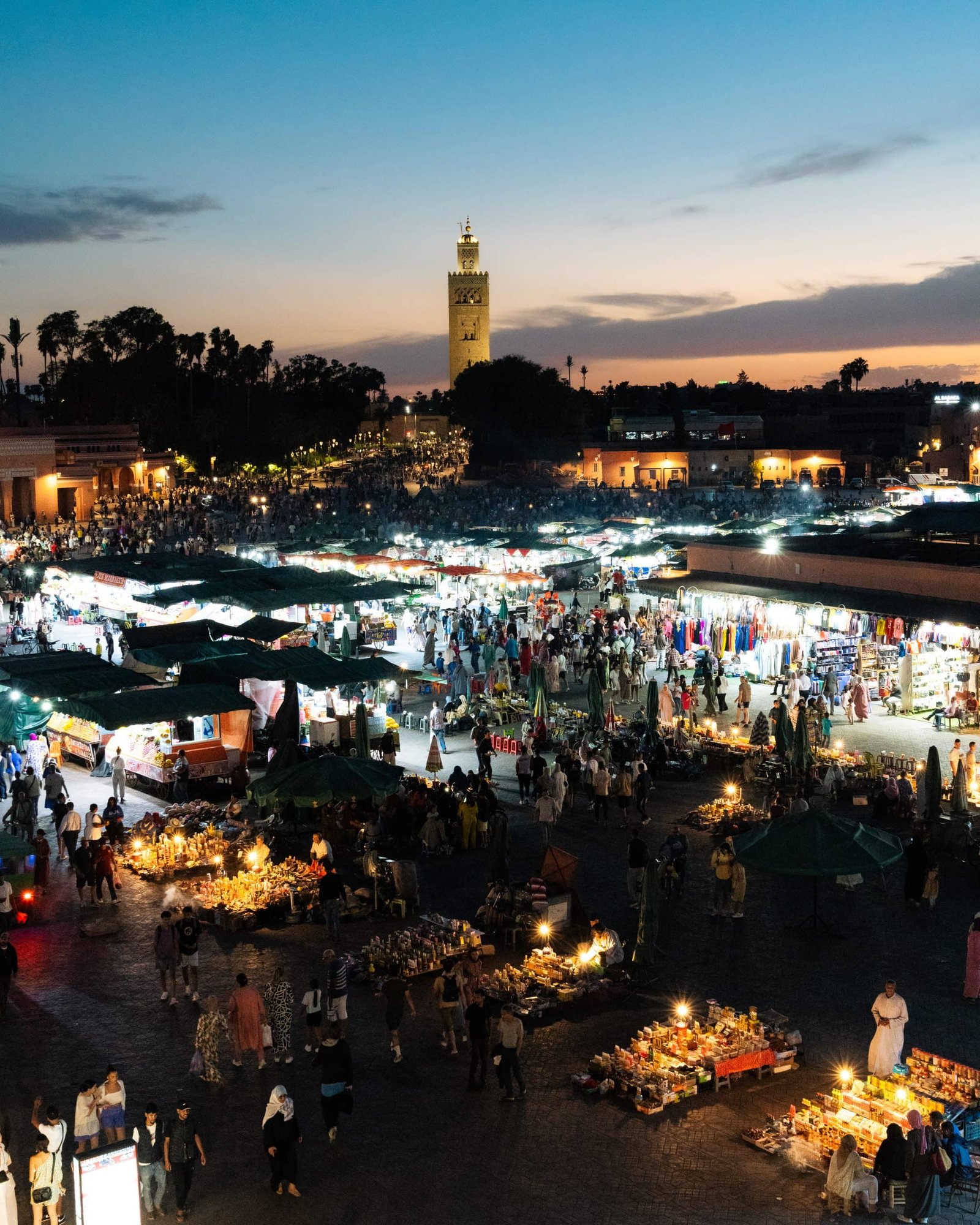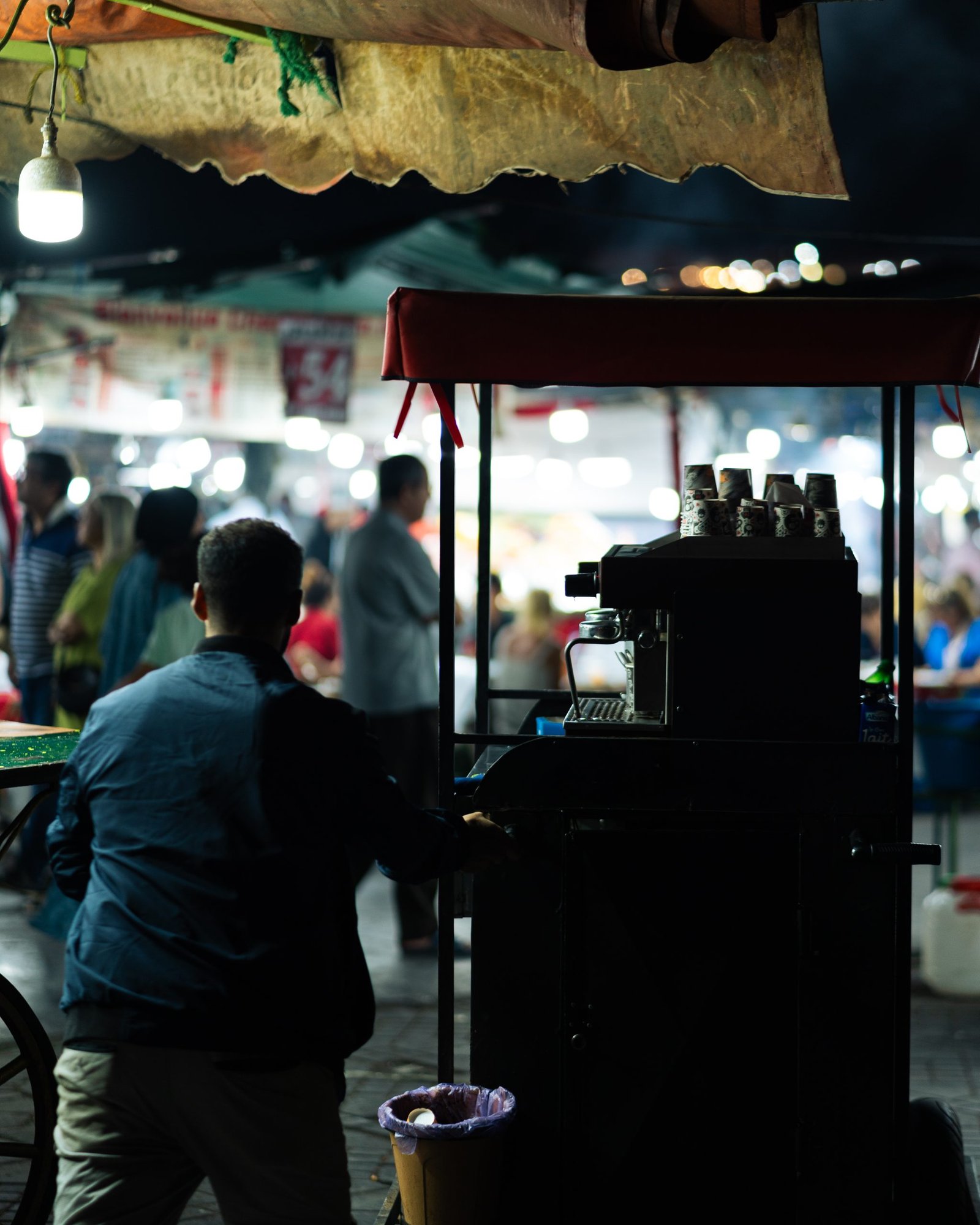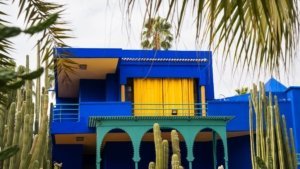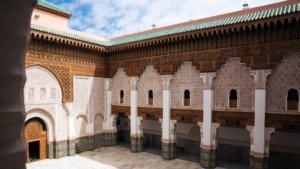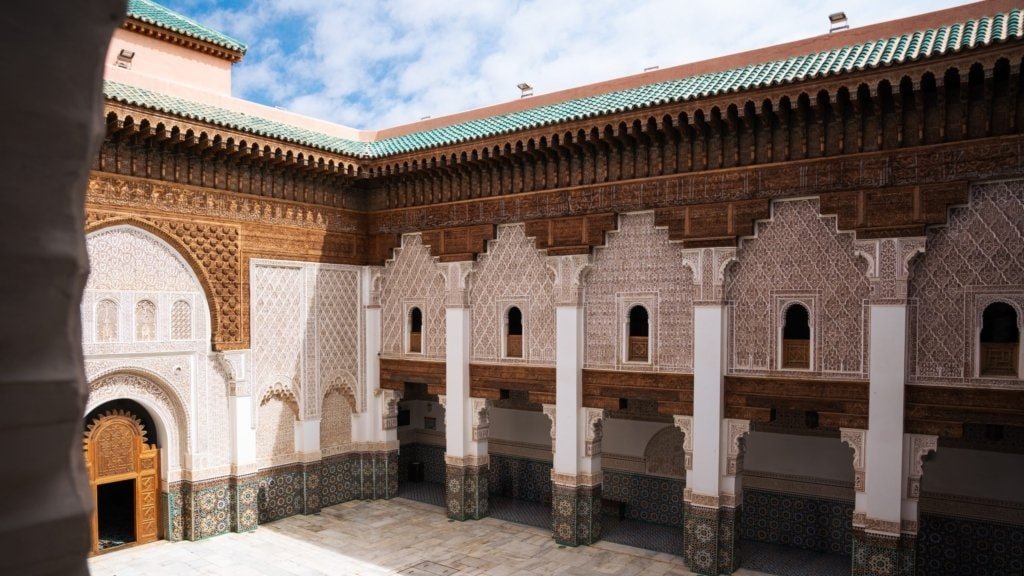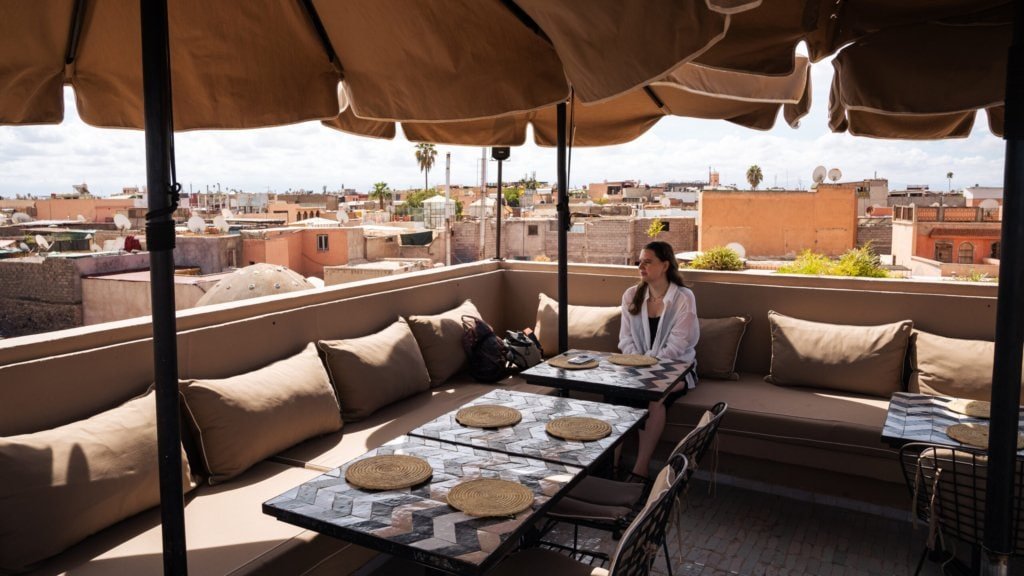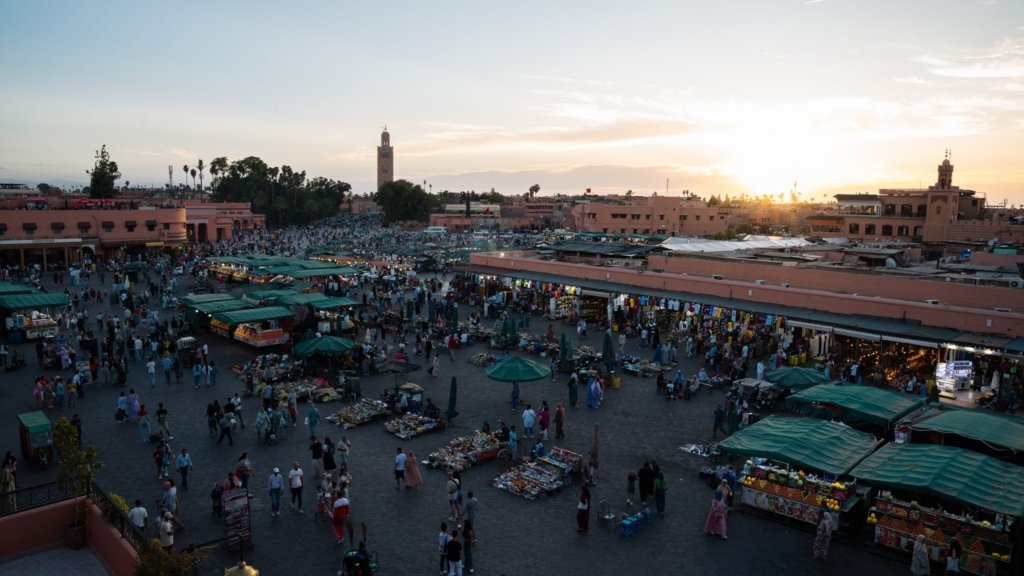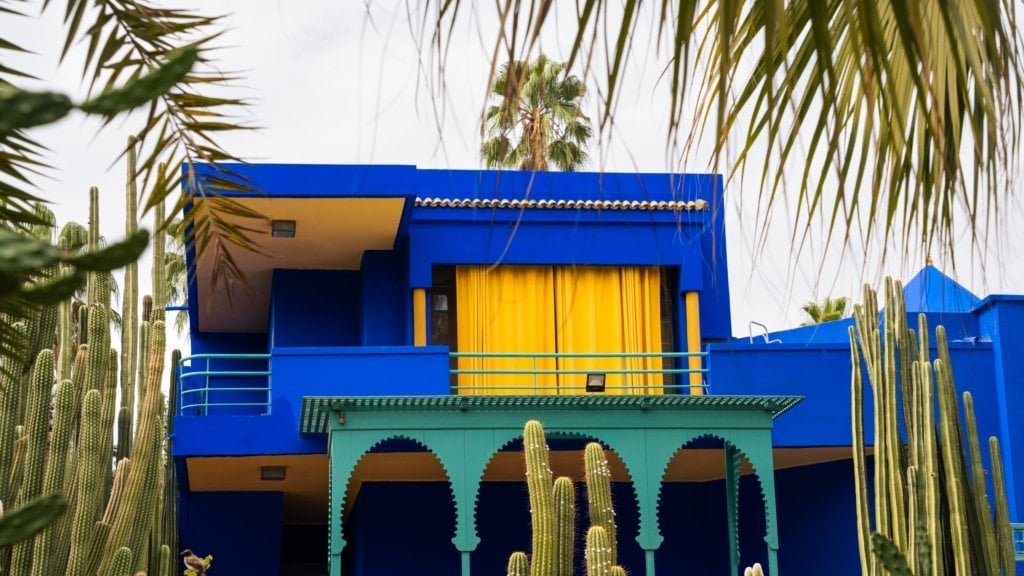Djemaa el-Fna is the beating heart of Marrakech and one of the most famous squares in Africa. This vibrant marketplace offers a unique blend of culture, history and hustle and bustle and is a must see for any visitor to the city.
Location and significance
The Djemaa el-Fna is located in the centre of the Medina, the historic old town of Marrakech. Many of the city’s main attractions are within easy walking distance. The place is a central meeting point for locals and tourists alike, surrounded by a maze of narrow streets and souks. It is a cultural hub, a place where different aspects of Moroccan culture come together. Tradition and modernity meet here, offering a unique insight into life in Marrakech.
History and culture
The Arabic name “Djemaa el-Fna” has historical and cultural significance. It means “gathering of the dead” or “place of the hanged”. This name has its origins in the past, when the square was the scene of public executions. Despite its dark origins, the Djemaa el-Fna has evolved over the centuries into a lively and culturally rich place, now known for its markets, artists and cultural events.
The Djemaa el-Fna has been a place of meeting and exchange for centuries. Traders, travellers and locals came together to trade goods and tell stories. The square has been recognised by UNESCO as a cultural heritage site. The lively performances of jugglers, musicians and storytellers that characterise the square today are a living expression of this long tradition.
Djemaa el-Fna by day and night
Daily activities
During the day, the Djemaa el-Fna is transformed into a bustling marketplace surrounded by stalls and small shops selling fresh fruit, spices, handmade souvenirs and traditional Moroccan clothing. The air is filled with the lively sounds of merchants selling their wares and the aroma of spices and freshly prepared food.
A variety of street performers enliven the square. Jugglers, acrobats and musicians offer visitors impressive performances. Another attraction is the henna artists, who paint elaborate temporary tattoos on the hands and feet of visitors. This tradition has a long history in Moroccan culture and is a popular way to engage with local art.
However, there is also a critical side that should not be ignored: The use of animals such as monkeys, birds, turtles and snakes. In order to attract tourists, these animals are often kept and exhibited in questionable conditions. It is important to be aware of this problem and to question such displays. Respect for the animals should always be at the forefront.
Nightlife and culinary experiences
After sunset, the Djemaa el-Fna becomes a huge open-air restaurant. Countless food stalls offer a variety of Moroccan delicacies such as kebabs, tagine and the famous snail soup. While musicians and dancers provide entertainment, the lights of the stalls and the smoke from the barbecues illuminate the square. An evening on the Djemaa el-Fna is an unforgettable experience and the ideal opportunity to sample the local cuisine.
Tips for the visit
- Taking photographs: Be respectful when photographing people, especially artists and merchants. A small tip is often expected.
- Safety: As in any crowded place, it is important to take care of your personal belongings and protect yourself from pickpockets.
- Food: To avoid upset stomachs, eat where the locals eat. This is often a sign of good quality and freshness.
- Bargaining: Haggling is common and expected when shopping on the Djemaa el-Fna. It can help to bring down the price considerably.
More than just a marketplace, the Djemaa el-Fna is the beating heart of Marrakech and a place where the city’s culture and history come alive in an impressive way. All in all, the Djemaa el-Fna is a place full of life and energy during the day, offering a variety of entertaining and culturally enriching experiences.

